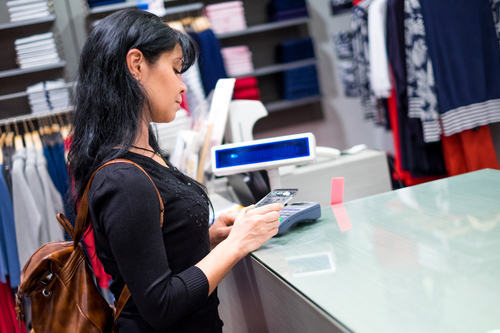It has been identified that the main objectives of major players within the mobile commerce industry or ecosystem is to influence users in the selection of a viable mobile payment instrument. They aim to shape the overall payment experience by injecting ease-of-use capabilities, taking advantage of the lures of offers and loyalty and assuring transactions keep the consumer’s identity secure. While mobile commerce and e-commerce are the chief drivers of innovation in the retail industry, their focus is driven by the speed, experience and convenience of payment processing. Now you know that mobile commerce is a driver of mobile payments, let’s also take a look at the various industry components of the mobile payments and retail industry.
Sell
Whether it is just mobile payments, exception processes, client reach, order fulfillment or mobile browse-to-buy ratio, mobile commerce empowers both business partners and consumers to purchase, exchange information, shop and fulfill orders. The thing to note here is how you can encourage your consumers to spend. To achieve desirable results, you must take the necessary steps to ensure that the browsing experience on your site is customer-orientated. The buying part should handle payment issues either through near field or cloud communications. This area will require a substantial amount of consideration to make sure that the payment process is seamless. Additionally, security features should not get in the way of a frictionless checkout process as well.
Market
This is mostly about location-based services as well as the use of marketing, context and profile that are associated with it. In the mobile world, it’s actually all about precision and context, and applying deep customer behaviors and insights from both offline and online channels come with great pertinence. Also in this current era, analytics-driven context awareness has already begun to replace “hit or miss” mailings. This simply means that businesses need to invest much time in the maintenance of a relevant dialogue and the understanding of their clients.
Buy
For retailers who want to mobilize procurement, they often optimize partner and supplier interactions that are based on alterations in customer and demand behavior on all accounts of the value chain. That being said, how and why do they mobilize the buying process? Perhaps, they wish to utilize this as a competitive advantage to increase the feedstock of optimized supply and to provide a true Omni-channel experience.
Service
When it comes to the service part, you can think of social hook points, bidirectional messaging, notification and the list goes on. Through mobile commerce, businesses strive to provide flawless customer service during all the interactions with their consumers. As mobile commerce is context-driven, how can a business include post-sale processes? This often relates back to selling, using marketing to close the loop, loyalty rewards and accepting payments. You can say that these are all in an effort to capture the consumers’ awareness of a product or brand.
A good example of how mobile commerce is taking effect is from annual retail events such as Black Friday. It has been observed that smartphones drove nearly 35% of all Black Friday online traffic and tablets account for more than 14% of the aforementioned. However, tablets have the upper hand when it comes to mobile sales compared to smartphones.
